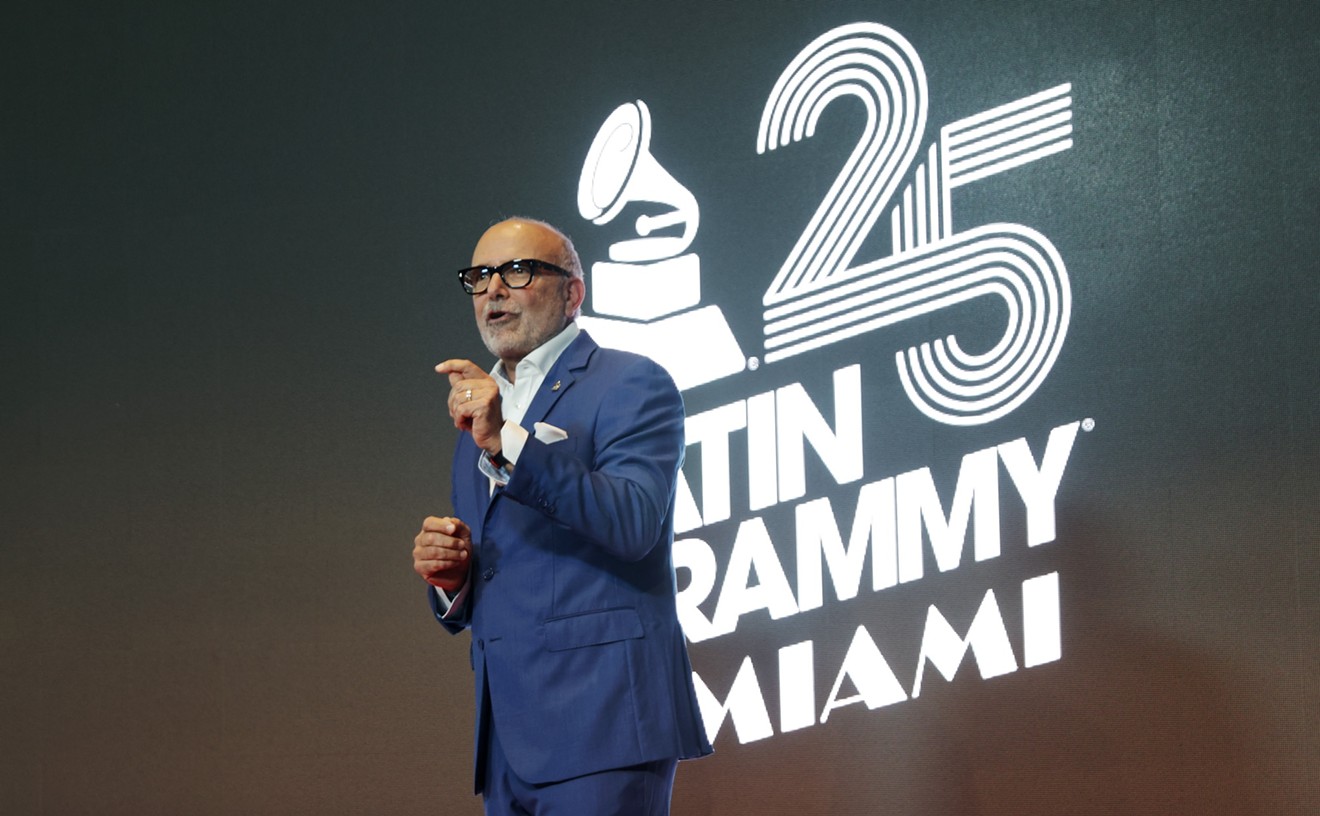These days his muscular brand of country-style merengue fused with hip-hop and house music is revered throughout the hemisphere, even as far south as Chile, where his band, Fulanito, headlined before a crowd of thousands at the Viña del Mar music festival this past February. "I never thought we would move that big wave of people, but the crowd just went crazy, euphoric even," says de la Rosa, a third-generation accordion master born in the heartland of the Dominican Republic, a region known as El Cibao.
Flexing an accordion since he was seven years old, de la Rosa moved to New York at age twenty-one. He survived not as a musician, however, but by working odd jobs and in factories. His music, though popular among expatriates, was considered too countrified to be hip. "I had all but given up music because it didn't pay enough anymore," he says. "But one day my son asked me to go to the studio and play the accordion over a rap song."
That song was "Guallando" ("Grinding"), and its sound was so arresting that DJs on Spanish-language radio stations such as Miami's El Zol 95.7 (WXBJ-FM) would play it several times in a row. Released at the tail end of 1997, it remains a staple in Latin clubland and has been conscripted as a soundtrack for countless radio jingles. In many ways "Guallando" signaled a watershed: It was the first time U.S.-born Dominican performers began to mine their musical roots. Don Arsenio's accordion-driven merengue often is referred to as "perico ripiao" -- stripped parakeet -- named after a favorite dish served at spirited parties in the Dominican interior. Pretty soon acts such as Sancocho, Nueve Once (911), and Kinito Mendez were meshing their merengue with other folkloric genres like bachata, with its twangy county and western sound, and "los palos" ("the sticks"), drumming music from Afro-Dominican religious rites.
The early and mid-1990s were marked by the explosion of New York-based Latin acts such as Proyecto Uno, Los Ilegales, and Sandy y Papo that crossed contemporary merengue with urban American mainstays such as hip-hop, rap, and house. Proyecto Uno referred to its sound variously as "merengue hip-hop" or "merenhouse." The revivalist movement led by Fulanito complicated the nomenclature of merengue with terms like "merenhouse-ripiao" and "bachaterengue." Its roots emphasis has not gone unnoticed by Anglo opinion leaders in the music industry, and some are wagering the Dominican Republic will be the next destination for U.S. hipsters now that Cuba and Brazil have become trampled by musical tourists.
"The greatest experience I've had is getting to know the Dominican Republic," says Ned Sublette, whose Qbadisc label made inroads into Cuba in the early 1990s and was a key factor in exposing Cuban performers to overseas audiences. "It's the best-kept secret around," he enthuses. Sublette experimented with merengue on his last record, Cowboy Rumba, and is toying with the idea of releasing a bachata set. He also is considering making a documentary of the Dominican music scene, something he may have wished he'd had the foresight to have done in pre-Buena Vista Social Club Cuba.
The other half of the equation that yielded Fulanito is lead singer Rafael Vargas. The son of Dominican immigrants, Vargas scored an international hit in the early 1990s with "Wiggle It," a hybrid of rap and house music he calls "hip-house." Vargas and his act, 2 in a Room, toured Europe and even got to kick it in front of crowds in South Africa, Asia, and the former Soviet Union. One of the collaborators in his follow-up act, the 740 Boyz ,was Winston de la Rosa -- Arsenio de la Rosa's son. By that time Proyecto Uno was raging on Latin radio, and Vargas warmed to the idea of performing in Spanish.
Vargas also was dating Winston's sister (now his fiancée) and spent much of the Christmas holidays at the de la Rosa household. "On holidays Arsenio and his brothers would whip out the accordion and tambora [a double-headed drum the size of a small barrel unique to merengue] and start to play," Vargas recalls. "I'd be sitting there listening to it and do what I always do, which is make up rhymes in my head. Another thing I noticed about perico ripiao is how excited people would get whenever it gets played at parties. So I thought it would be a nice twist, instead of doing the same thing as everybody else," namely Proyecto Uno-style techno-merengue.
Vargas and company recorded "Guallando" in October 1996, more than a year before its release. Vargas would play it for friends and family, but even he thought it was too far out to shop to a label. After being urged repeatedly to do so, he capitulated and convinced his old label, Cutting Records, to press a CD: El Hombre Mas Famoso de la Tierra. The disc went on to sell more than 500,000 copies worldwide, an impressive number for an independently issued Spanish-language record.
Vargas sees Fulanito's commercial success as both a vindication for Arsenio de la Rosa and a unifying force among Dominican immigrants, serving as a reminder of their country roots, particularly for their U.S.-born offspring. "Arsenio played old-style merengue for many years and people always looked down on it, young people in particular," he says. "Now you see young people getting into perico ripiao, and you see old people rapping."










